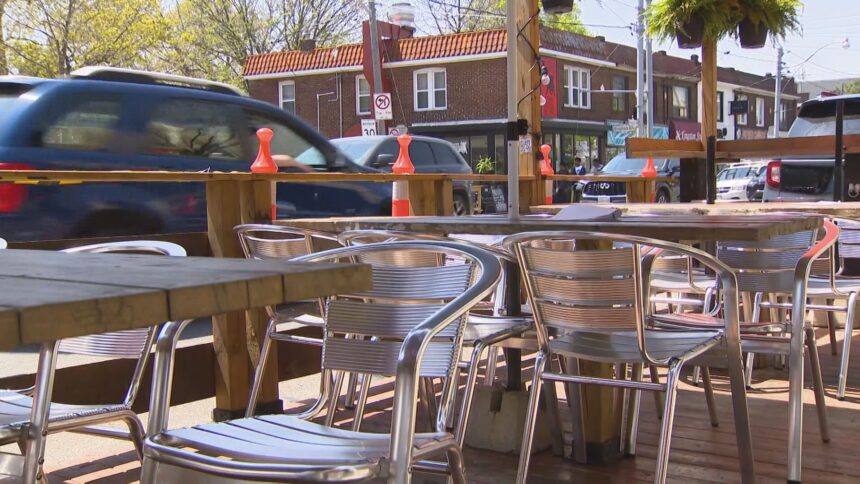The patio at Drift, a seafood restaurant in Halifax’s waterfront district, buzzed with activity last weekend as temperatures finally climbed above 25°C. Owner Martin Chen moved between tables, chatting with guests who seemed happy to part with disposable income after months of tightened spending.
“We’re seeing about 30% more walk-ins compared to April,” Chen told me, gesturing toward the harbor where tourists snapped photos. “After two brutal summers of inflation eating into margins, this feels like the recovery we’ve been waiting for.”
Chen’s experience mirrors what’s happening across Canada as restaurants enter what industry experts are calling “the most promising summer season since before the pandemic.” Early data from Restaurants Canada suggests customer traffic is up 18% nationwide compared to this time last year, with the average bill size increasing by 7%.
The restaurant industry, which employs nearly 1.2 million Canadians and contributes roughly $95 billion annually to the economy, has weathered a perfect storm of challenges. Supply chain disruptions, labor shortages, and record inflation pushed nearly 13,000 establishments to close permanently between 2020 and 2023. Now, the pendulum appears to be swinging back.
“We’re tracking four key trends that suggest summer 2025 will be transformative for the sector,” explains Sylvia Reyes, chief economist at Restaurants Canada. “Cooling inflation, pent-up demand, renewed tourism, and interestingly, a shift in work patterns that’s changing lunch rush dynamics.”
The Bank of Canada’s latest monetary policy report shows food inflation has eased to 1.8%, the lowest rate in six years. This cooling effect has arrived just as consumers seem ready to indulge again. A survey by Deloitte Canada found that 67% of Canadians plan to dine out more frequently this summer than in 2024, with 41% setting aside specific budget for restaurant experiences.
In Vancouver’s Gastown district, brewery owner James Wilson has noticed the change in consumer psychology. “Last summer, people would order one beer and nurse it for an hour. Now they’re coming in groups, staying longer, and ordering appetizers without checking the price first. Fear has left the building.”
The spending shift coincides with Canada’s tourism sector roaring back to life. Destination Canada projects international arrivals will exceed pre-pandemic levels by 7% this summer, with American visitors leading the charge. The favorable exchange rate—with the Canadian dollar hovering around 76 cents USD—makes urban dining scenes particularly attractive to visitors.
“American tourists typically spend 23% more per restaurant visit than domestic customers,” notes Reyes. “Their return is gold for high-end establishments in Toronto, Montreal, and Vancouver.”
But the recovery isn’t uniform across the country. Rural and suburban restaurants continue to face headwinds, particularly those in regions heavily affected by this spring’s severe weather events. In parts of Quebec and Ontario still recovering from flooding, restaurant bookings remain 15% below seasonal averages.
The labor picture also remains complicated. The latest Statistics Canada employment figures show the hospitality sector still carrying approximately 42,000 job vacancies nationwide. Restaurants have responded with wage increases—average hourly pay for servers has climbed to $19.75 excluding tips, up 12% from 2023.
“We’ve had to completely rethink our compensation model,” admits Chen, who now offers health benefits and quarterly bonuses to retain staff. “But it’s paying off in consistency and service quality, which customers notice.”
Technology adoption has accelerated across the industry as well. QR code menus, once a pandemic necessity, have evolved into sophisticated ordering systems that integrate with kitchen operations. A recent survey by Square found that 78% of Canadian restaurants now use some form of integrated ordering technology, up from 47% in 2022.
“The tech investments we made out of desperation during COVID are finally paying dividends,” explains Priya Sharma, who owns three casual dining spots in Calgary’s Beltline neighborhood. “Our staff can handle more tables, and we’re capturing valuable data about customer preferences.”
That data reveals evolving consumption patterns. Plant-based menu items now account for nearly 22% of orders at Sharma’s restaurants, while locally-sourced ingredients have become a significant driver of customer choice. The “locavore” movement has gained particular traction among millennial and Gen Z diners, who represent the fastest-growing demographic segment for restaurant spending.
The evolving work-from-home landscape has also redistributed restaurant traffic in surprising ways. Downtown lunch rushes have stabilized at about 65% of pre-pandemic volumes, but neighborhood restaurants are seeing unprecedented midweek business.
“Wednesday is our new Saturday,” laughs Wilson. “People working from home want to break up their week with a nice lunch out. They’re not commuting, so they’re redirecting that time and money into local experiences.”
Climate concerns are reshaping summer dining trends too. Extreme heat events last summer drove many restaurants to invest in patio misters, shade structures, and even air-conditioned outdoor seating. These adaptations are proving worthwhile as Environment Canada forecasts above-average temperatures across most of the country this season.
Government support continues to play a role in the industry’s recovery. The federal Restaurant Revitalization Fund, introduced in late 2024, has distributed approximately $310 million to 4,200 independent restaurants nationwide. Recipients have used these funds primarily for debt reduction, facility improvements, and staff retention bonuses.
“The support came later than we needed, but it’s making a difference now,” says Chen, who received $75,000 through the program. “It gave us breathing room to survive the winter and position for this summer’s opportunity.”
Financial institutions are also showing renewed confidence in the sector. TD Bank’s small business lending division reports a 34% increase in approved loans for restaurant expansions compared to last year. This capital influx is enabling established restaurants to refresh interiors, expand patios, and in some cases, open second locations.
However, restaurant owners remain cautious. Many have adopted more conservative inventory management, preferring to occasionally sell out of popular items rather than risk waste. Weekend reservation policies have also tightened, with many establishments now requiring credit card guarantees to reduce no-shows.
“We’re optimistic but realistic,” explains Sharma. “This industry has taught us that conditions can change overnight. We’re enjoying the boom while maintaining the lean operations we developed during tougher times.”
As summer progresses, industry analysts will be watching several metrics closely: the ratio of dine-in versus takeout revenue, average party size, and perhaps most importantly, the percentage of discretionary versus necessity-based dining.
“When people celebrate special occasions at restaurants again, that’s when we’ll know the recovery is complete,” says Reyes. “The summer numbers so far suggest we’re well on our way.”
Back in Halifax, Chen is taking nothing for granted. He’s extended patio hours, launched a new seafood boil promotion targeting tourists, and partnered with local breweries to create exclusive summer pairings. After years of survival mode, he’s finally thinking about growth again.
“Summer has always been our make-or-break season,” he reflects, watching servers deliver trays loaded with his signature lobster rolls. “But this one feels different. There’s an energy coming back—not just to my restaurant, but to the whole industry. We’ve earned this summer.”






